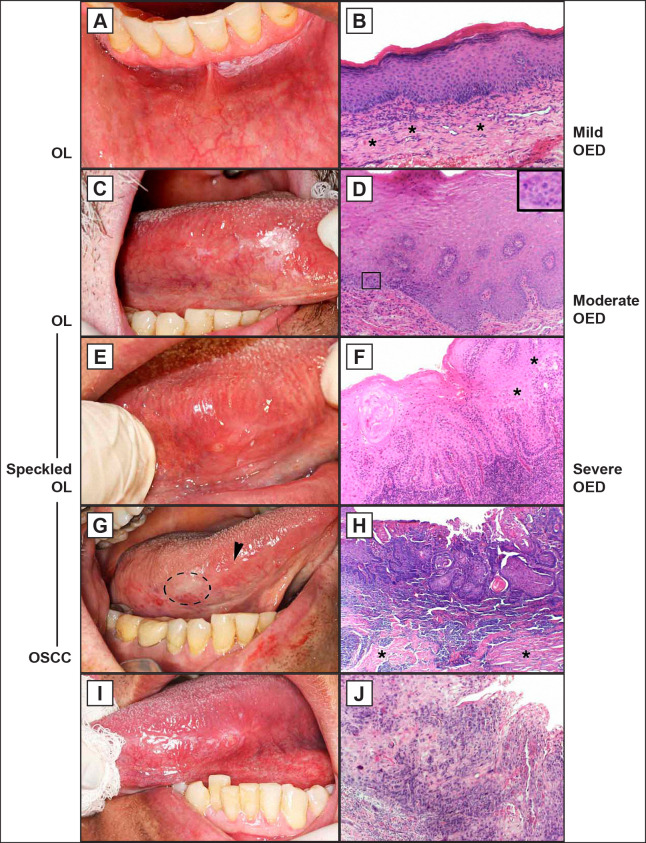Figure 1.
Corresponding clinical and microscopic aspects of oral leukoplakia (OL) and oral squamous cell carcinoma (OSCC).
A = Homogeneous OL on alveolar mucosa.
B = Mild oral epithelial dysplasia (OED) with preserved epithelium stratification, basal layer cell hyperplasia and connective tissue with fibrous appearance (*).
C = OL predominantly white with discrete red area. Lateral borders of the tongue.
D = Moderate OED with basal layer cell hyperplasia, loss of polarity, disorganization of parabasal e basal layers. Atypical mitotic figures (detail).
E = Speckled OL with discrete nodular on the tongue.
F = Severe OED with irregular epithelial stratification, drop-shaped rete ridges, loss of epithelial cell cohesion (*), and hyperchromasia of the basal layer.
G = Erythematous areas with discrete ulceration in the lateral borders and ventral tongue areas, and white area anterior (circle).
H = Well differentiated OSCC with pearl cornea formations, irregular epithelial disorganization, premature keratinization in single cells, and atypical mitotic figures. Areas of fibrosis in stroma (*).
I = Nodular and ulcer area with raised margin and adjacent white areas.
J = Complete loss of epithelial stratification, hyperchromasia, many atypical mitotic figures, and premature keratinization in single cells.
B, D, F, H, J = hematoxylin and eosin stain, scale bar = 20 μm.
Note: the clinical views C and G are the same patient - male, 77 years old: C = November 2014 and G = follow-up in 6 months with malignant transformation. It is possible to observed scar in the anterior part referring to surgical removal of the leukoplakia (arrowhead).

